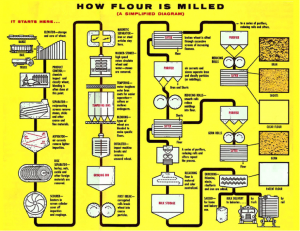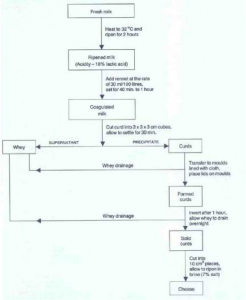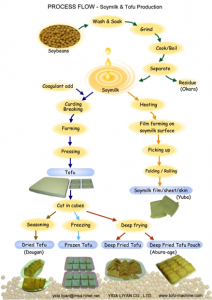I pride myself in eating generally healthy, local, made-at-home food, but this assignment has really opened my previously deceived eyes into reality. If people believe in the quote, you are what you eat, then I am a true gas guzzler.
Breakfast: I don’t normally have a lot of time in the morning so make some exquisite since I have a 9am class, but I try to start off with a well-balanced breakfast.
- Tea: Nativa Organics Ginger Green Tea (blended and packed in Canada)
- Organic Egg: GoldEgg Organic (Abbotsford, B.C.)
- Rye Bread: Rubschlager Rye- Ola (U.S.A)
- Organic Avocado: Save on Foods (Mexico)
I was really surprised how challenging it was to find any information on Nativa Tea. I managed to find one little blurb on some random website which stated that the “Nativa Organics name is your guarantee that this product is certified organic by an independent third party” (http://steepster.com/teas/nativa-organics/11377-blueberry-white). The fact that is was certified by some “independent third party” made me a bit nervous, because it makes it very ambiguous as to what the standard of organic means for them; their criteria are no where to be found. Since I could not find anything on that specific brand I just Googled organic green tea process and I found some interesting facts. I found this lovely diagram which showed the basic processing of green tea:
(http://www.teanet.com.cn/english/teamachine/green_tea_machine/images/green_tea_machine_manufatur.gif )
Every process has a large machine helping it along, and so this was an indication of how much oil was used for the entire process. I searched around the website to see how much petroleum is wasted for a period of time, but I was unable to find the answer.
The egg I used was only shipped from Abbotsford, so the distance was only about 51.7km away from its final destination. Nonetheless, they had to be transported in a refrigerated truck. I looked into how much energy a single fridge at home would you use, depending on the model it could use between 350-1400 kWh a year. These trucks are the size of 7-15 standard refrigerators and so they require a lot more energy, i.e. petroleum to power them. Here is a diagram of how many sensors a single truck has to manage the fuel levels of the fridges, making this clearly an important aspect of the truck:
(http://www.guardmagic.com/images-solution/solution-gpsgsm/refrigeration-truck-monitoring.jpg)
Lastly, I will look at the avocado, as I will focus on wheat in my later meal. The reason I brought up the avocado was to highlight the increasing difficulty of finding details about the processing of these foods, especially of foods that are processed in other countries that have different rules and regulations. What Mexico labels as organic might be a completely different standard to that of Switzerland. Yet because these foods are imported they aren’t as strictly regulated, as maybe they should be.
Lunch: This for me is the most important meal of the day, so I loaded up on healthy vitamins, minerals and energy high foods to get me through the day:
- Oats: Rogers Old Fashioned Large Flake Oats (Armstrong, B.C.)
- Banana: Langley Farm Market (Ecuador)
- Almonds: Save on Foods (California?)
- Green Seedless Grapes: Langley Farm Market (California)
- Organic Pumpkin Seeds: Richmond Country Farms (Richmond, B.C.)
- Organic Kiwi: Langley Farm Market (New Zealand)
- Craisins: Langley Farm Market (Richmond, B.C.)
I was disgusted that my meal travelled over 21,000 km, and here I thought eating organic was the better way to go. The kiwi and banana especially seem to rack up the petroleum oil just on transport. Maybe in terms of overall body health organics are beneficial but clearly not so much for the environment, which in turn affects the air we breath in, and therefore our bodies. As the days get colder I won’t be able to depend on items grown in my own back yard, like the apples and lettuce I will have for dinner, since they will not be in season and I will have to turn to further away locations from where I will get my fix for fruits and vegetables.
Let’s start the petroleum usage diagnosis. The oats go through a rigorous process as found on the North America’s Miller’s Association picture below:
(http://www.namamillers.org/wp-content/uploads/2012/10/how-flour-milled.jpg)
They require large machines for much of the processing, as they need to be sorted, moisturized, dried, and steamed. Each and every machine used requires petroleum, and since these machines run for majority of the day, the oil adds up quickly.
They also require packaging, which will derive from some variation of plastic bags. On the American Chemistry Council it explained how they create different types of plastic materials. Not surprisingly, plastics are “produced by the conversion of natural products or by the synthesis from primary chemicals generally coming from oil, natural gas or coal”. On Youtube I also found this fantastic video that explains the process of making a plastic bag worth checking out to get a better picture just how much manufacturing power, i.e. oil, goes into making plastic bags: How It’s Made; Plastic Bags
Up until now I feel like an environmental Godzilla, just adding up the oil kilometres. Where I am a bit saved is that the only foods on this list that require packaging were the oats. I got the almonds and craisins (dried cranberries) in bulk so I just used the given plastic bag at the bulk section.
The pumpkin seeds also required a short car ride from New Westminster to Richmond, as we just emptied out the pumpkin seeds from the pumpkins we carved for Halloween. We cleaned and dried them ourselves and now I sprinkle it on certain meals!
Snacks: I don’t like to eat massive meals during the day so I end up relying quite heavily on snacks. Here are my snacks of the day:
- Organic Cherry Tomato: Langley Farm Market (Mexico)
- Organic Carrots: Langley Farm Market (California)
- Organic Cucumber: Backyard!
- Organic Pink Lady Apple: Backyard grown!
- Purdy’s chocolate: Metrotown Centre (Vancouver, B.C.)
I’m starting to see a huge California trend here, it seems as though the majority of my food comes from the U.S.A. The shipping costs, in terms of petroleum usage, were already highlighted so I will not repeat myself here. I would rather discuss Purdy’s chocolates. Even though delivery wise it’s a local source, production wise it depends heavily on cocoa for its production; and cocoa does not grow in Canada. Their website indicates that they get their cocoa from Cote D’Ivoire, Africa. Another 11,300km can be added to my growing distance list. Also, their “finest ingredients”, (including special ingredients in their different chocolates such as macadamian nuts, peanuts, caramel, etc ) are not necessarily readily available in Vancouver. Although I can not find exactly where they import their special ingredients from, they do mention that they make their chocolates “from the world’s very best ingredients” (https://www.youtube.com/watch?v=aTcW1rwzrLc), suggesting that they import products from all over the globe.
As the list indicates, the cucumber and apple are from my very own backyard so I save some kilometers there for now. The carrots come from California and the Cherry tomatoes are imported from Mexico, so not as far away as so Africa, but they still had to travel a great distance.
Dinner: Dinner is rather simple, as I am too tired from the day to bother with anything exquisite, and cooking anything just takes too long for me.
- Orange Pepper: Save on Foods (Chilliwack, B.C.)
- Lettuce: Backyard grown
- Tomato: Origin Organics (Delta, B.C.)
- Hemp seeds: Naturally Splendid (Canada)
- Feta cheese: (Concord, Ontario)
- Tofu: Superior Tofu (Vancouver, B.C.)
This turns out to be my most “homegrown” meal, as all the products listed come from Canada. Four of them actually are grown within B.C.’s borders!
For this section I would like to start off with discussing the Feta cheese process. Not only does it require refrigeration (see the eggs explanation under breakfast) but it also has a very detailed a particular processing system, requiring lots of temperature regulations as well as lots of machines for the procedure. Here I found the diagram of a general cheese process:
(http://www.ilri.cgiar.org/InfoServ/Webpub/fulldocs/Bulletin27/image/FIG8.jpg)
Really interesting to note, the original Greek Feta was made from primarily sheep’s milk, or a combination of sheep and goat milk, but this Canadian feta cheese is actually made from cow’s milk! I guess in this way it makes to more local, and possible to be made in large quantities in Canada. It is a great source of Vitamin A and Calcium so that kind of justifies eating it, despite it not being the original Greek cheese (http://www.trestelle.ca/english/getcheese.php?cid=48).
Tofu, like feta, is also requires quite a rigorous processing program. I did not know that there were that many different variations of tofu until I stumbled across this hidden gem:
(http://www.tofu-machine.com/images/processflow.jpg)
I don’t eat meat generally, and so I need some way of getting my protein intake. Tofu is such a versatile product you can easily add it to any meal! It’s great to know it has a local source. I was extra surprised when I read on their website that they “only use top quality, Grade A, Canadian grown, non-GMO soybeans” in all their tofu (http://superiortofu.com/sections/products).
Conclusion: I was saddened to see that a lot of my healthy choices that I was proud to eat on a regular basis actually come from miles away across either ocean. This number I fear will only continue to grow as winter approaches and access to fresh fruits and vegetables from a local source will be limited (my mom already bought a box of Chinese Mandarins….yikes!). I knew that transport and keeping the product in pristine state during that process, ate up a lot of energy and oil. What I learned most from this food log is there is a lot of petroleum that is used for the actual processing of the product, especially some that operate twenty-four hours a day. I cannot even imagine some heavier processed products, chips and candy, having lower energy consumption levels. Just to view the ingredients list of a single Wonderbar (sugar, peanuts, glucose syrup, modified milk ingredients, modified palm oil, hydrogenated palm kernel oil, unsweetened chocolate, rice crisps, modified vegetable oil, vegetable oil, palm oil, cocoa butter, salt, hydrogenated vegetable oil, hydrogenated palm oil, acetylated monoglycerides, calcium chloride, citric acid, mono and diglycerides, sodium bicarbonate, soy lecithin, natural and artificial flavours) is distressing; I actually knew 4 of those products.
I think Richard Manning would be pleased that I don’t eat that many grains or meats, just because he criticized how dependant the western society has become on grains. As he mentioned in this article, the green revolution was “the worse thing that has ever happened to the planet” (41) since it made our food intake increase in grains. It allowed the population of the world to double, and the weight of the growing population continues to be a huge global issue. It also lead the USA to actually give 80% of the grain production to livestock, instead of poor people who could use the grain (45). Yes, he also criticized that vegetarian lifestyles also have a huge negative impact on landscape, as it would cause more land to be converted to cropland. However, I think my food log seems to attain a reasonable balance; it surely is not perfect but it strives to achieve a middle ground in todays food crisis.
Although many of my food producers took pride in being organic, a lot fail to have some sort of strategy to aim at decreasing their energy consumption. This means that even though we are moving towards creating more organic products, our carbon footprint in regards to processing is not being addressed, at least based on my food research.








Recent Comments